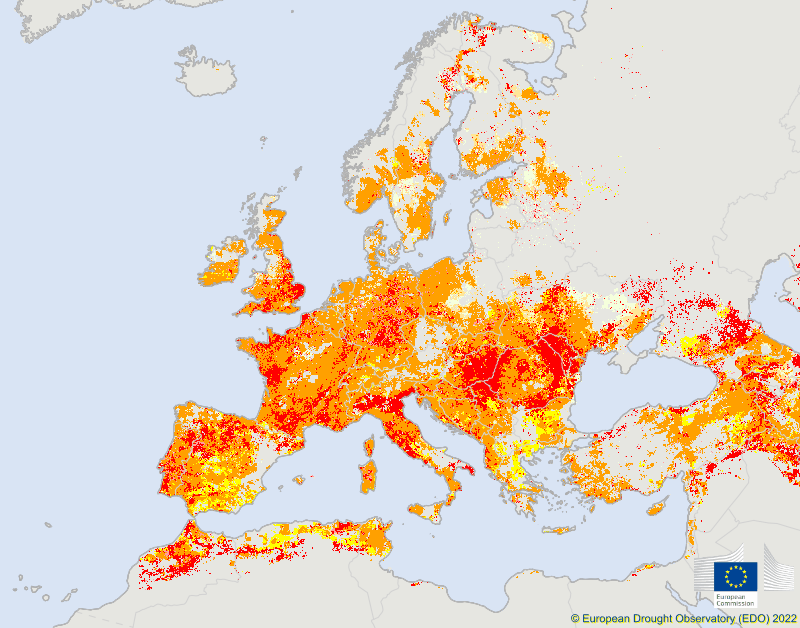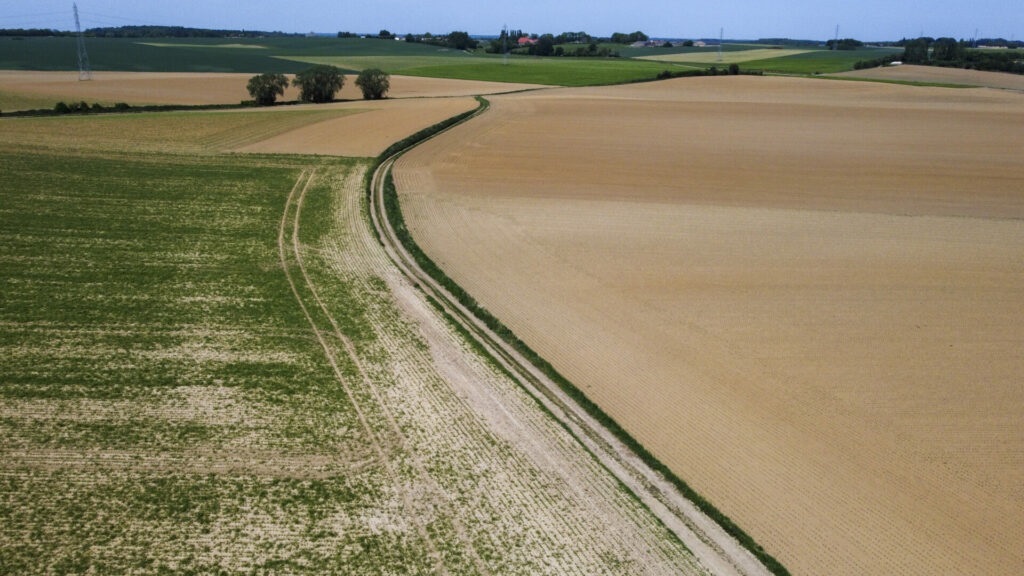The drought situation in many regions of Europe remains severe, according to the European Commission's latest drought report.
The ‘Drought in Europe - August 2022' report, published by the Commission’s Joint Research Center (JRC), is an update of the assessment of Europe's drought situation based on the data and analyses of the European Drought Observatory. The figures are about the same as reported in recent weeks.
According to the new report, 47% of the EU is still under warning conditions, meaning that precipitation has been less than usual and soil moisture is in deficit, and 17% of the EU is in alert, meaning that also vegetation and crops show the negative effects of drought. Cumulatively, 64% of Europe is under warning or alert, which is also contributing to spread widely the areas of fire danger across the EU.

Situation of Combined Drought Indicator in Europe - 1st ten-day period of August 2022, credit: European Drought Observatory. Yellow: Watch, Orange: Warning, Red: Alert
Drought hazard has been increasing, especially in: Italy, Spain, Portugal, France, Germany, the Netherlands, Belgium, Luxembourg, Romania, Hungary, northern Serbia, Ukraine, Moldova, Ireland and United Kingdom. The rest of Europe, already affected by drought, maintains stable severely dry conditions.
Local recovery is observed in southern Czech Republic, northern Austria, and limited areas of central France. Regions already affected by drought in spring 2022 (e.g., northern Italy, south-eastern France, some areas in Hungary and Romania), are the ones with the most worsening conditions.
“The combination of a severe drought and heatwaves has created an unprecedented stress on water levels in the entire EU,” commented research Commissioner Mariya Gabriel. “We are currently noticing a wildfires season sensibly above the average and an important impact on crops production.”
“Climate change is undoubtedly more noticeably every year; the European Commission and its scientists are working tirelessly to map and study this crisis with the best technology available, from the space and on the ground, and are leading the efforts to protect our environment and our citizens from emergencies."
Water and heat stresses worsen significantly previous negative outlook on yields for summer crops, as reported in the JRC MARS Bulletin of August 2022. Current yield forecasts for grain maize, soybeans, and sunflowers at the EU level are, respectively: 16%, 15%, and 12% below the 5-year average.
The severe precipitation deficit has affected almost all rivers across Europe, affecting the energy sector for both hydropower generation and cooling systems of other power plants, as well as river transport. Several EU Member States took measures to restrict water as supplies may still be compromised in the coming weeks.
Warmer and drier than usual conditions are likely to occur in the western Euro-Mediterranean region in the coming months, until November 2022. In some areas of the Iberian Peninsula, warning drier than usual conditions are forecasted for the next three months
In the last days, precipitation events have alleviated drought conditions in some regions of Europe. However, they brought new challenges as in some areas they occurred in the form of severe thunderstorms.
According to JRC experts, the current drought appears to be the worst since at least 500 years. Final data at the end of the season are expected to confirm this preliminary assessment. On a positive note, JRC forecasts that for most of Europe close to normal conditions will return from August to October 2022.
The Brussels Times

